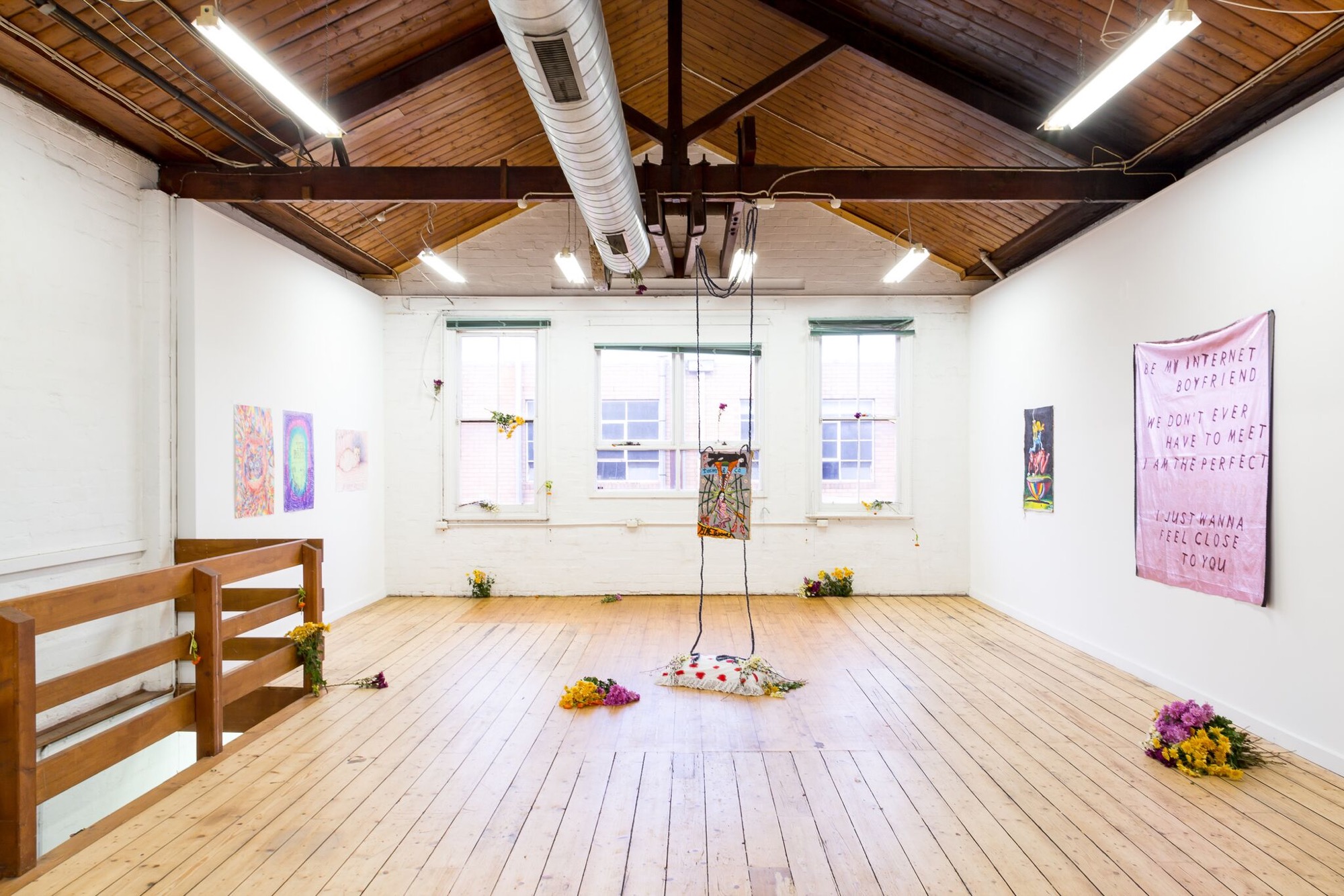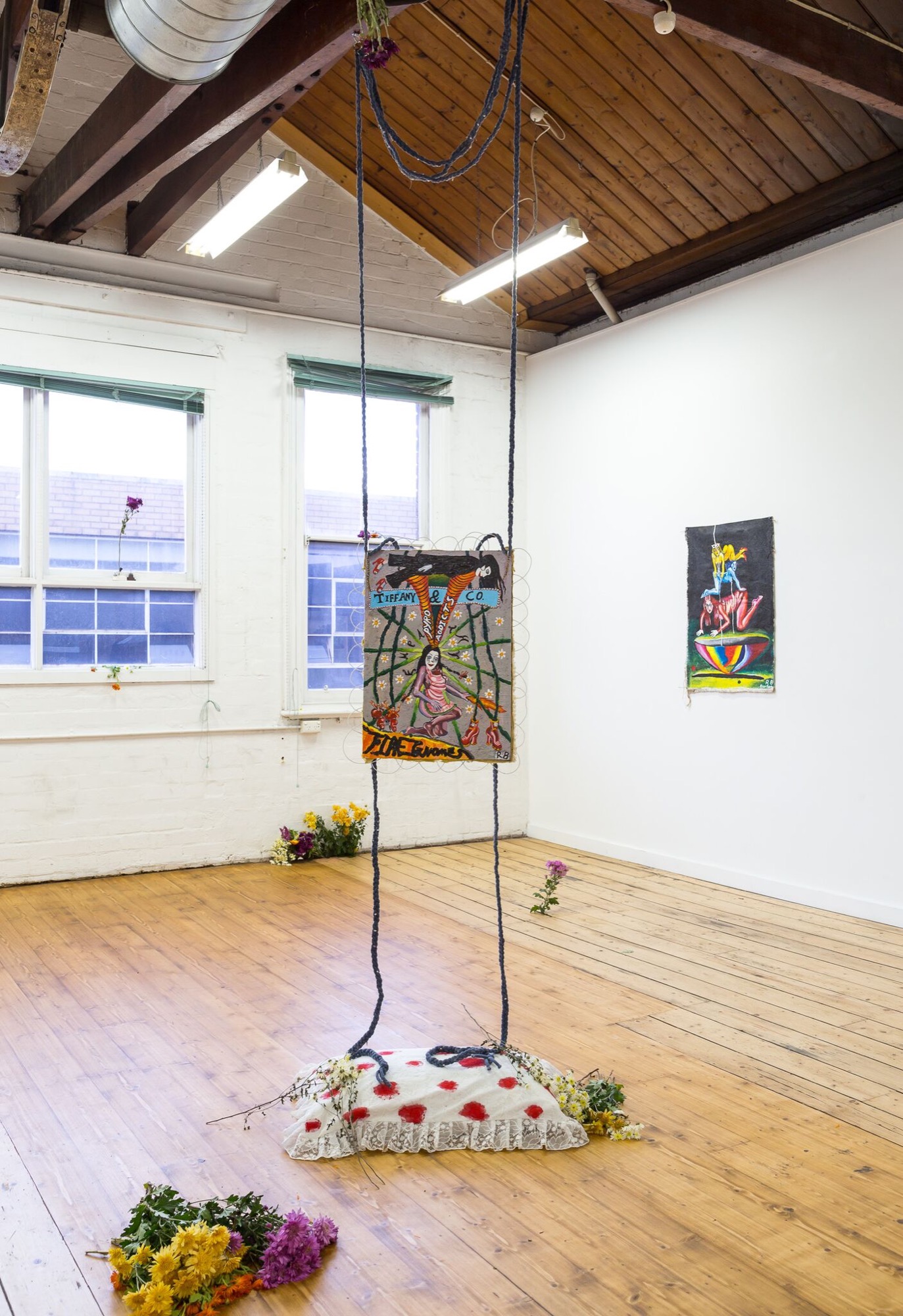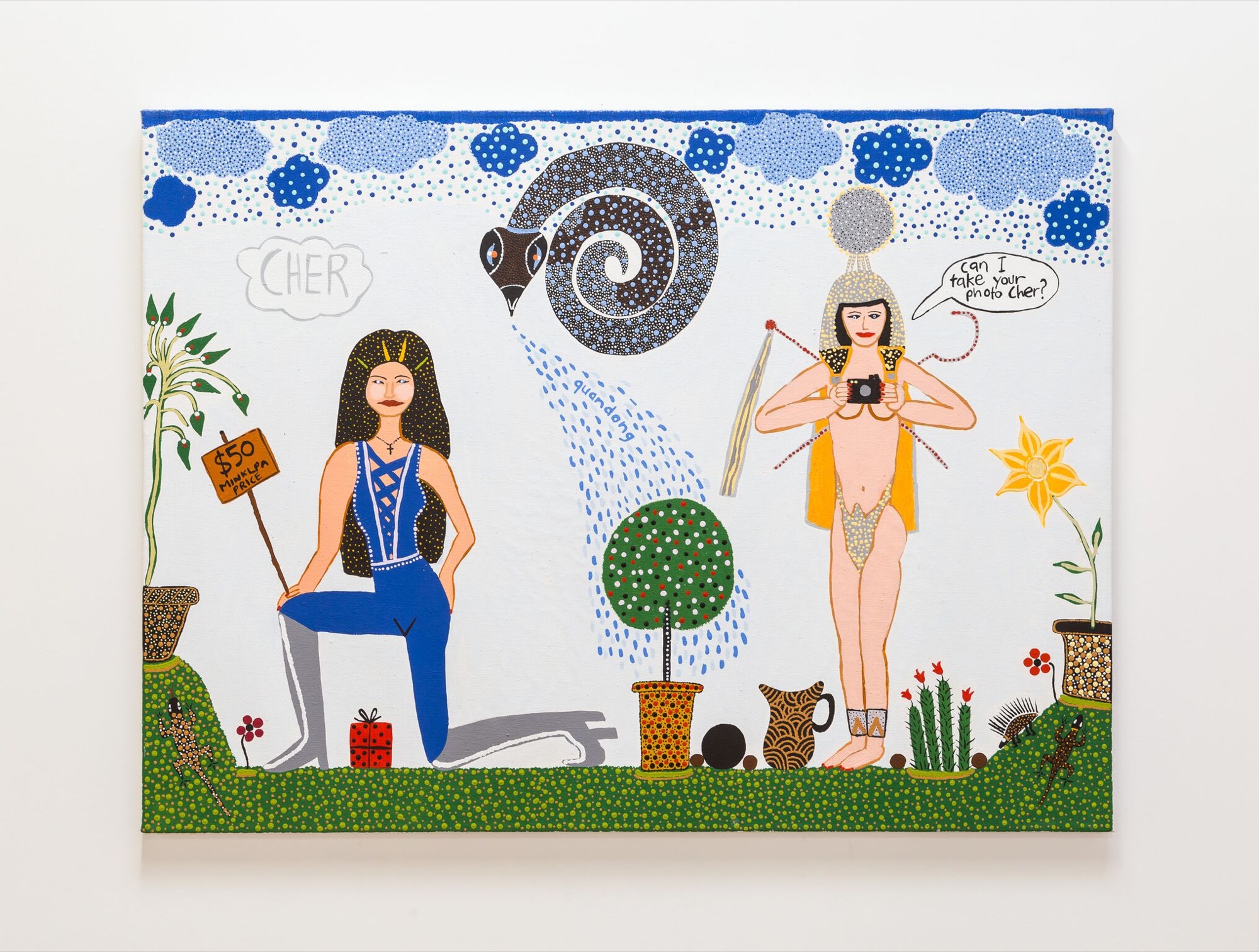Hard Feelings
Anna Parlane
When The Honeymoon Suite opened in 2016, it was with Rose Coloured Glass, an exhibition of work by four artist couples that flirtatiously invited viewers to guess who was dating whom. Rose Coloured Glass wondered: can romance blossom from a shared passion for abstraction? Or vice versa? The Honeymoon Suite was established as a platform to bring emerging and established artists together, and the frisson of intimacy has remained part of its program. From the bodily and material explorations of artists like Marian Tubbs and Kate Newby, to the intertwined collaborations of Isadora Vaughan's Recalcitrant Bodies, 2017, or the dry humour of Jessie Bullivant's Guinness World Records-style certificate Coldest Feet (Living), 2017, it has consistently shown works that explore intimacy in both human relationships and art practice. Hard Feelings, curated by Serena Bentley, declares the honeymoon definitively over. In the Suite's final exhibition before it closes in June, unreasonable, contradictory and sometimes ugly feelings—petulance, resentment, bravado, boredom, jealousy—have risen to the surface. Sarcastic comments and escapist daydreams are eroding the rosy glow of those new beginnings.

Bentley's line-up assembles New Zealand and Australian artists who, in her words, “aren't afraid to get personal.” Works by established specialists in emotional honesty Jenny Watson and Anastasia Klose are juxtaposed with those of younger artists Katherine Botten, Natasha Matila-Smith and Rea Burton, rare early paintings by Saskia Leek and two works by Kaylene Whiskey who recently came to prominence as winner of the Art Gallery of New South Wales' 2018 Sulman Prize. The exhibition pivots around the figure of the strong woman with strong emotions, and leans heavily towards figurative paintings and drawings with an anguished or confessional tone. The self-conscious, and often self-deprecating, diaristic revelation is a well established and familiar feminist trope. For me, the most interesting aspect of Bentley's exhibition is the degree to which the works use this formula to express something slightly unhinged and less easily categorisable.

The grand dame of punk-influenced feminist confessional practice, Jenny Watson, is clearly the matriarch of this exhibition. The admiration of strong women is a curatorial theme (and also, I suspect, a curatorial methodology) and Bentley has chosen to include Watson's painting of screen idol Elizabeth Taylor instead of one of her better-known autobiographical works. Watson's Elizabeth Taylor in 'Butterfield 8' on Buttercup Yellow, 2011, revisits Taylor's role as a promiscuous socialite in the 1960 film Butterfield 8. Taylor reportedly hated the film, regarding the script as “near-pornographic,” but appeared in it to fulfil her contractual obligations to MGM Studios. Taylor's frustration coloured her performance of a character who was also trapped in the role of a sex object by a patriarchal social structure that celebrated female sexual allure while being unable to tolerate female agency. Watson's painting, in which Taylor's negligee-clad figure appears behind a veil of sheer organza, captures a complex facial expression which sits somewhere between desolation, scepticism and simmering rage.
Hard Feelings does indulge in emotive monologuing. The morose, anxious cat depicted in Anastasia Klose's drawing Bunny Boiler, 2012, loads on the guilt: “Why don't you call me anymore? I know you have heaps of shit on, but so?” The texts on Natasha Matila-Smith's satin wall-hangings also narrate romantic dysfunction and turmoil. However, as Watson's painting signals, there is more to Hard Feelings than melodrama. At its best, the exhibition offers raw, tightly wound expressions of intense and complicated feelings. Bentley's curatorial focus centres on the interaction between female agency and emotional intensity, it is not simply, or even, a platform for purging. This is reflected in the fact that almost all of the works are physically discrete, wall-hung paintings and drawings. The only work that is not wall-based is Matila-Smith's Life is Hard Without You Near Me, 2018, a continually replenished supply of fresh flowers that the artist invites viewers to position in the exhibition. The gradually wilting blooms endow the gallery with the tragic air of a DIY roadside memorial to an accident victim, but as a whole this work feels supplementary to the exhibition's main focus.

The most interesting works in the show are those that are the least marked by artistic fashion. Emergent Auckland talent Rea Burton's works do a deep dive into some complicated feelings, surfacing with surreal and grotesque subject matter that is conveyed with unapologetic intensity. Burton's deploying my dreams in a sensible way, 2018, is far from sensible. A mad, altar-like assemblage which draws on an Art Brut aesthetic, it evokes a dream state or out-of-body experience. Even more than her intentionally provocative painting mummy loves you, 2018, in which a human pyramid of highly sexualised goddess figures lactate copiously into a giant rainbow-coloured bowl, deploying my dreams has a savage, uncompromising quality. It is also a pleasure to see early works by established New Zealand painter Saskia Leek. Bentley has dug out a number of her grunge-inflected and narrative-oriented paintings of the late 1990s and early 2000s. Works like Rot, 2004, demonstrate that the punch and humour of Leek's practice comes from her long-standing interest in found, kitsch and low-grade imagery. While Leek's paintings have never been as purposefully provocative as Burton's—their idiosyncrasy tends to be charming rather than discomforting—both artist's works are distinguished by their commitment to a singular and eccentric point of view.

Like Watson's painting of Elizabeth Taylor, Kaylene Whiskey's works adopt a fan girl stance to depict naively rendered pop icons. In the parallel universe of Whiskey's work, Cher, Katy Perry and a collection of music-video party girls hang out in the local setting of the artist's home of Indulkana, South Australia. In this party atmosphere, roller-skates, Diet Coke, thigh-high boots and short shorts mingle seamlessly with mingkulpa chewing tobacco and local wildlife, while a quandong fruit tree is watered by a benevolent water snake spirit coiled amongst the clouds in the sky. Whiskey's pantheon of deities centres on Cher, whose power pose and shiny high-heeled boots reveal her to be the aspirational pinnacle of female strength. Katherine Botten's video Depression Cherry, 2017, stands as a dark inversion of Whiskey's upbeat passion for her role models. A montage of footage and images harvested from the internet, Depression Cherry centres on a video monologue uploaded by a man who—having endured all 8:34 minutes of his reflections on homelessness, success and goal-setting—I can confidently say is the worst person in the world. Botten has spliced this aspiring motivational speaker's comments together with images of luxury real estate, artworks, fashion magazine spreads and prescription medication. The work is a brutal stream of consciousness in which (anti-) aspirational figures appear, as in Whiskey's paintings, alongside the minutiae of the artist's life.
Having plumbed emotional depths, the strongest works in Hard Feelings succeed in releasing something inchoate and slightly unhinged. This is most clear in the complex expression Jenny Watson captured on Elizabeth Taylor's face, but it's also evident in Kaylene Whiskey's unwavering passion for Cher, and in Katherine Botten and Rea Burton's raw aggression. These feelings are hard because they are strong—but also because they are complicated and difficult to express or make sense of. The effort to do so could be described in terms of a feminist methodology, but it could also be seen more broadly as an ethical stance, an attempt at honesty and integrity. The honeymoon may be over, but break-up is not necessarily on the cards: it might just be time for a reality check.
Title image: Saskia Leek, Rot, 2004, oil on cardboard. Courtesy the artist and Ivan Anthony, Auckland. Photo: André Piguet.)


